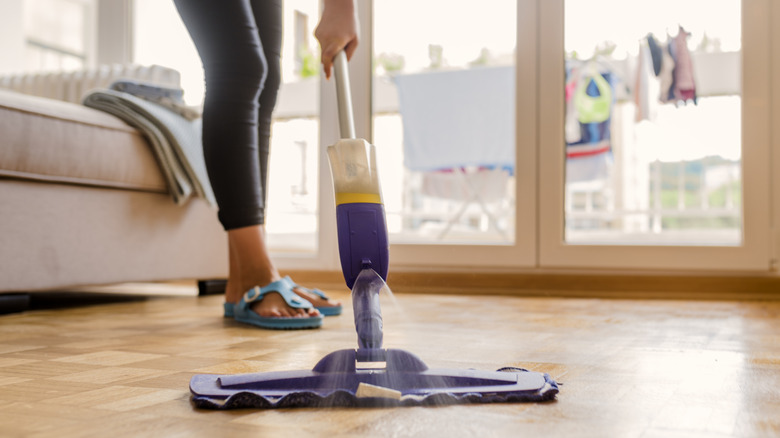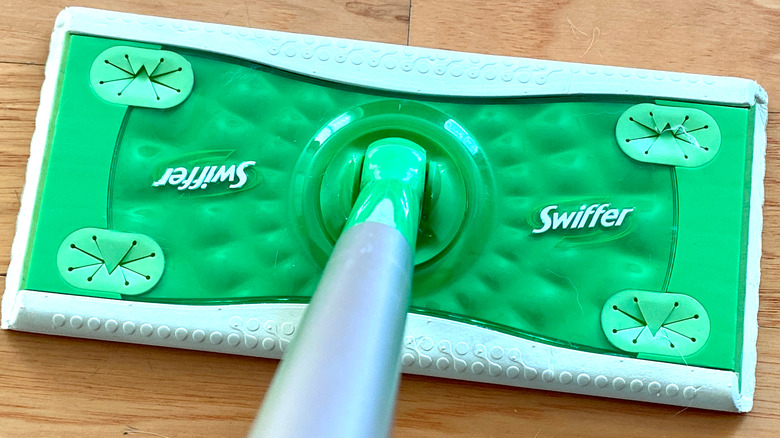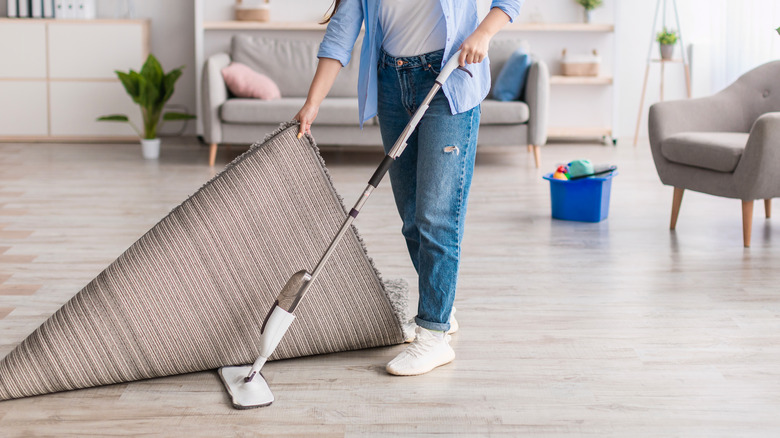Here's How To Fix Your Leaking Spray Mop
On mopping days, no one wants to lug around a microfiber mop and bucket, where you have to dunk it in water, wring it, then mop the floor. Spray mops make cleaning easier and faster with a simple push of a button, plus they have a replaceable liquid cleaning solution holder so that you don't have to constantly change the bucket's water when it gets dirty. However, if you find your spray mop leaking, you'll want to find the leak and fix it before it worsens. For example, if the nozzle is the problem, then changing the nozzle can help stop the leaking. Of course, there can be other issues with the leaks, but they're simple to fix.
It's vital to fix your spray mop to prevent further damage, so once you notice a minor leak, look over the mop to see where it's coming from. Sometimes the parts aren't installed appropriately, so you'll have to take them apart and place them back correctly. We know how frustrating it can be to have a leaking spray mop; you don't want any cleaning solution wasted. Here's how to fix it.
Re-install spray mop parts
A spray mop, like a Swiffer WetJet, is a convenient, popular cleaning tool that is often overlooked but makes an excellent investment for your home. Unfortunately, while they allow you to clean your floors effortlessly, they can sometimes leak, which can be challenging to clean up. The best way to fix the leak is by checking to see that every part was adequately placed. If the parts aren't assembled right, you'll want to remove them and put them back.
After you've re-assembled the parts, clean each area. First, clean the mop head with a soft brush. When the mop head isn't securely placed, is stuck, or blocked, it can leak water. Dry the area and check for leaks. Next, clean the mop pad under water to remove dirt or replace it if it's rundown. Then, examine the spray bar to see if it's clogged; you'll be able to tell when the water leaks with slight pressure around it and won't fully travel to the mop head. In addition, using the wrong cleaning solution can cause the spray bar to clog since some cleaners are thicker than others. To unclog the spray bar, use a pressure washer to thoroughly clean and unclog it. Finally, ensure the mop head is tightened to the base because if it's loose, it'll leak water.
Tips to maintain your spray mop's condition
Once you've fixed the leaks on your spray mop, cleaning it regularly to maintain its condition is crucial. While at some point it will need to be replaced, there are a few things you can do to extend its lifespan. For example, we mentioned how the mop head could get dirty; you'll want to clean it often with warm water and soap to eliminate debris and dirt. You want to avoid the mop head from getting clogged and having to replace it early on. Moreover, emptying the water tank should be done every time you're done using the spray mop. If the water tank is left full, the mop head won't get fully dry, which could cause mildew and mold to appear.
Another ideal habit is wiping down the spray mop's floor attachment after every use. While it has a pad to pick up dirt and debris, too much grime build-up along the edges can prevent it from gliding smoothly on the floor. You won't wear down your mop head, so it'll last a long time.


